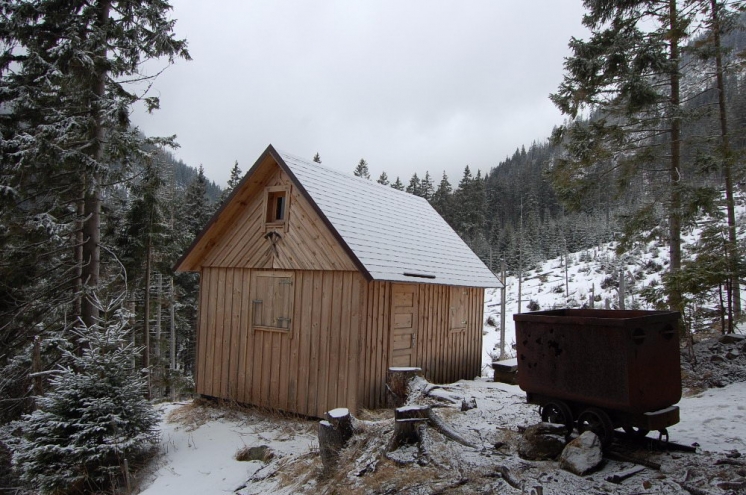Mining in Obří důl (Giant Valley) – Part One

Speleologists from Horní Albeřice have been carrying out mining and geological surveys of old mines in the Krkonoše (Giant Mountains). They do not omit Obří důl (Giant Valley) either, which is the largest mining area in the Krkonoše mountain.
They have discovered that the Sněžka (Snow Mountain) hides a well-preserved complex of mines which represents mining industry from the 16th century to 1950s. After many years of efforts speleologists managed to open a part of the Kovárna mine to the public.
History
According to old chronicles the trade route lead to Silesia over the Krkonoše since 12th century. This route was used by the first prospectors, therefore, it is very likely that small-scale metal mining took place already in the Middle Ages. Indirect evidence can be found in Rýchory and Svoboda nad Úpou since the 11th and 12th centuries. Search for these old mines in Obří důl (Giant Valley) is very complicated. Mining activities lasted with various breaks until 1960s and each newer mining activity largely covered older one. The oldest documented record of local mining activity can be found in 1511 where it is stated that Meissen miners came to Trutnov who moved to Obří důl (Giant Valley) after a setback in a gallery in Šibeniční vrch (Gallows hill). In 1534 a company of seventeen entrepreneurs requested that a mine prerogative for Obří důl (Giant Valley) will be given to them by emperor Ferdinand II. In respect of mine remoteness, they planned to build iron works, stamping mill, a small settlement with inn, brewery and other facilities. The then Lord of Vrchlabí Kryštof Gendorf of Carinthinia (Cristopher Gendorf of Carinthia), emperor’s advisor in matters of mining and minting, did not recommend it for it would have created a competition to his own steel mines in Herlíkovice and Maršov. With regard to findings several places were mined, nonetheless. In 1570, a mine entrepreneur and prospector Hans Seyfert found rich deposits of copper, lead, and arsenic ores there.
The Kovárna mine (Smithy Mine)
Main mining was concentrated in Kovárna and Gustav mines which were connected not deep under surface. In the books it is stated that a total depth of mine is 140 meters which is 24.5 meters under the Úpa river. These measurements have not been supported by evidence yet for when geological survey was carried out in 1950s the lowest part of the mine was covered. The mine depth is told to be 100 meters. In respect of the Czech Republic this depth is not huge but due to its remoteness and extreme climate conditions of Obří důl (Giant Valley) miners had a hard time. Ore and gangue were carried out from mines either manually or they used capstans or simple winches. Neither mining facilities nor their remnants were found. There is no historical evidence. In some parts (of mine) there are climbing sections – wood constructions with platforms which are interconnected with ladders. They are no typical ladders. The typical ones were found just few. These were of special type i.e. single-stage ladders called ”lezce” (large logs with carved holes for feet). They were found preserved five-meter long in the mine. For miners climbing on them with full ore baskets on their backs had to be a nightmare. They extracted ore manually using hammer and pick or so called ”fire setting”. Fire-setting method used local timber as a fuel. In the tunnel foreground the heating fire was made. Once the temperature reached 600°C, the rock was heated up and then quickly cooled down with water. The result was a cracked suitable rock for mining. Mining using only hammer and pick was very slow. Miners proceeded with mining just few centimetres per day. On the contrary, fire-setting method was faster. Miners were able to dig a meter or more in a shift. When fire-setting method was used to dig large area, there were cubic meters of a rock torn away.
Source: www.lomyatezba.cz
